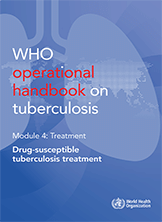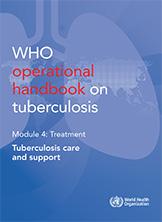Treatment
Web annexes
Web annex 1
Clinical outcomes and pharmacokinetics of first-line drugs (rifampicin, isoniazid, ethambutol and pyrazinamide) in children (aged <18 years) treated for drug-susceptible tuberculosis: systematic review and meta-analysis.
Click here to view pdf
2.3 Options in treatment of DS-TB
In patients with presumptive or confirmed DS-TB, there are several regimens that can be used based on current WHO policy. The 6-month regimen has become the standard of care all over the world but efforts have been made to develop effective shorter regimens to treat DS-TB. Several trials were designed to assess whether a shorter treatment regimen can remain highly effective and raise no additional safety concerns.
2.2 Care and support during TB treatment
All treatment delivered should align with WHO-recommended standards, including patient-centred care and support, informed consent where necessary, principles of good clinical practice, and regular patient monitoring to assess regimen effectiveness and patient safety (1). Clinical monitoring of people on treatment is important, and this handbook includes information on both treatment monitoring and the usefulness of post-treatment follow-up for special cases (e.g. long-term complications of TB or TB sequelae).
2.1 TB diagnostics and drug susceptibility testing
Innovative rapid molecular tests to diagnose both pulmonary and extrapulmonary TB in all populations are strongly recommended over sputum smear microscopy and culture methods, because rapid tests can provide same day results (4). Some of the innovative tests also provide drug susceptibility results for rifampicin (R), isoniazid (H) and fluoroquinolones (FQ), allowing rapid confirmation of diagnosis, and timely and effective treatment allocation.
1. Introduction
This operational handbook on the treatment of drug-susceptible tuberculosis (DS-TB) complements the World Health Organization (WHO) publication WHO consolidated guidelines on tuberculosis Module 4: Treatment – drug-susceptible tuberculosis treatment (1). It provides practical advice based on best practices and knowledge from fields such as pharmacokinetics, pharmacodynamics, microbiology, pharmacovigilance, and clinical and programmatic management.
Pagination
- Page 1
- Next page
 Feedback
Feedback

